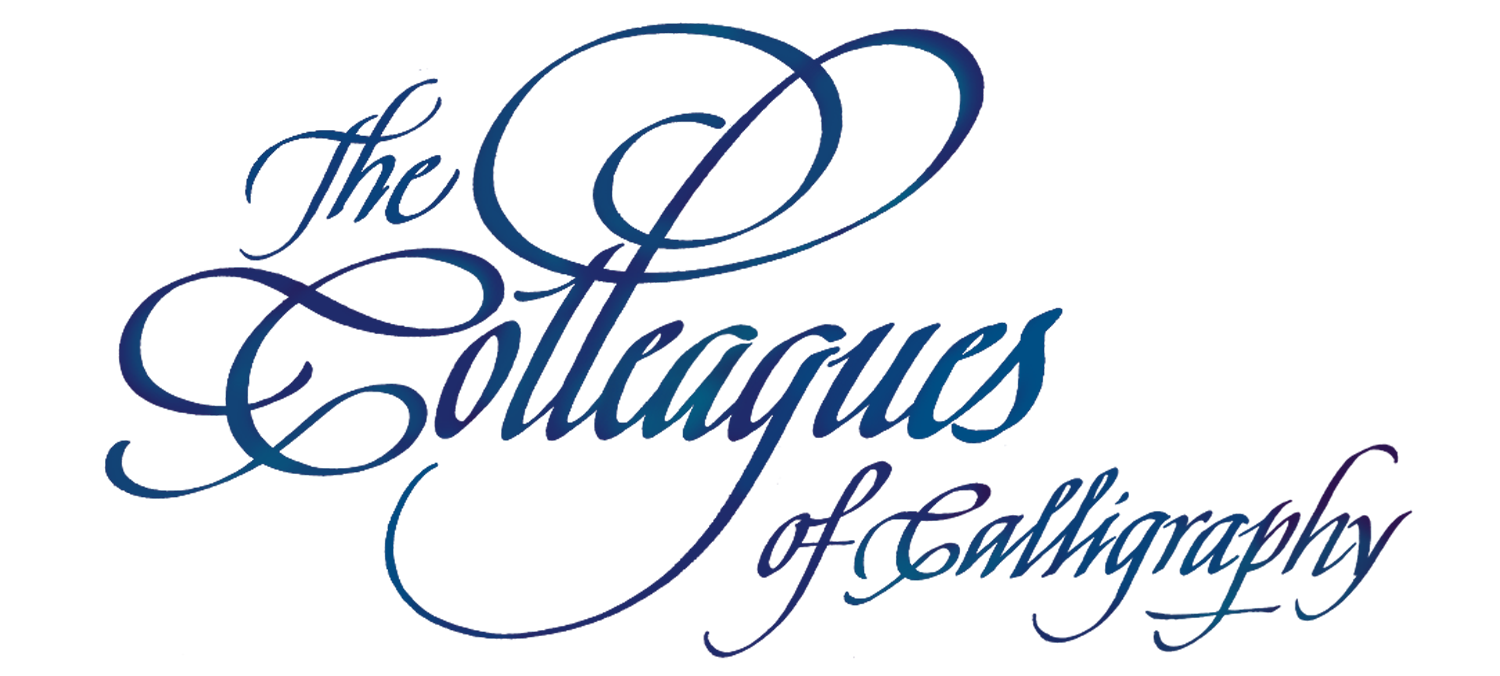We calligraphers find great joy in our craft, the tools, the heritage and then connections between our brain, hands and traditional materials. In this workshop, we had the opportunity, to spend time with a craftsman who delights in using his brain, hands and traditional materials to create our beloved tools with a simplicity and keen eye for the merest details.
Dennis walked us around his spotless and very well organized workshop rooms with Stephanie doing a yeoman’s job of camera wrangling and not making us feel dizzy. His work rooms hint at his love of the value of craftsmanship, creativity and collaboration with others who help him create his knives and quills.
He showed us how to cure quills that have stood in water for some time and that are then immersed in Mississippi river sand heated in an electric frying pan to 325 degrees for 35 seconds until translucent. He made it look easy and effortless as he was organized and has found the raw materials that he can use with confidence.
The cured quills rest before being cut by hand or with his Quill Cutting Machine - a delightful 18th or 19th Century device that is the Swiss Army knife of quick cuts to make a perfect quill. But Dennis showed his delicate touch and mastery of simple tools when he hand cuts his quills to a precise .75mm width, using careful scoops and a toe nail trimmer on a surfboard for an end cut. He does not have many tools it seems but he has trusted tools that he is familiar with and that he and the tools have developed a relationship with and know how to work together.
He alluded to this relationship when talking about using a cut quill - how it is not an instant out of the box tool but has to be coaxed and persuaded to work in our hands the way we want them to. Donald Jackson described a quill as "the sports car" of pens as they are learned and understood as an extension of our hands - indeed, they are made of the same material as our fingernails.
He has continued the craft taught to him by George Yanagita of making a quill knife and showed the processes and how he collaborates with others in the area for the treatment of the metals to make a strong blade. The final finishing of the blade is done by hand on his 3 different grades of ceramic stones and then finished with a strop to what he calls an “exquisite sharpness”. Test a blade at an angle on your thumb and be sure your pen knife is as sharp as can be.
Images- Top to Bottom/Left to Right: a “George Knife” - photo credit - Kris MacDonald. Kris just sold this knife on our Classifieds page - but you can see Kris’ nice write up of this beautiful tool and learn a tiny-bit about George. Next: Dennis in studio with his Opti-visors! Next 2: Dennis demonstrates filling his quill [fitted with a custom reservoir] with a bamboo skewer cut to a point. ) Last: a large-scale model of the customized reservoirs that Dennis designed and creates for his quills.
The topic of reservoirs was enlightening - who knew of so many designs? And again, we saw Dennis’ desire to create a solution that is simple and elegant, no over engineered or fussy. His dislike for the S-curve favoured by others was well demonstrated as he worked to load the quill off his bamboo skewer. And a side bar conversation on how to make a hand cover out of a sock or cutting fingers off of gloves highlighted the wide and deep knowledge within our group. The afternoon was a delight of learning, passions and keeping the old alive. His open invitation to people to come and learn his craft was heartfelt and sincere - and necessary.
Dennis reminded all of us that our tools are not fancy but they are things of beauty, a careful consideration of design, comfort and practicality that allow us to create art with less of a struggle. So do visit his website and reach out for lessons and become a life learner of creative and traditional elegance. And now I need to go and tidy up my studio.
Visit Dennis’ Website






